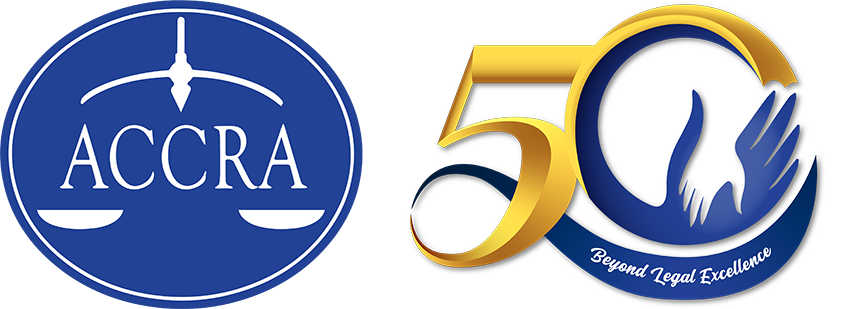As we begin a new year, most corporations would have to go through the usual process of electing their directors or trustees and officers. Previously, meetings were mostly in-person, but such proved to be difficult, if not unsafe, given the pandemic and the prohibition of large in-person gatherings that came with it.
Republic Act No. 11232, otherwise known as the Revised Corporation Code of the Philippines (RCC), introduced provisions allowing the attendance, participation, and voting by stockholders or members in regular and special meetings through remote communication or in absentia. The RCC also incorporated the Securities and Exchange Commission (SEC) Memorandum Circular No.15, Series of 2001, which allowed the conduct of board meetings through teleconferencing or videoconferencing.
To provide guidance to corporations on these new provisions, the SEC issued implementing guidelines on March 12, 2020 through Memorandum Circular No. 6, Series of 2020, which took effect immediately upon approval by the Commission En Banc.
Under the RCC and SEC Guidelines, a corporation may authorize in its bylaws, or through the majority vote of the board of directors or trustees, the conduct of these acts via remote communication (i.e., teleconferencing, videoconferencing, audio conferencing, computer conferencing) or in absentia:
- For stockholders or members to vote in the election of directors or trustees; however, in corporations vested with public interest, the right of stockholders or members to participate and vote through remote communication or in absentia in the election of directors or trustees is available despite absence of provision in the bylaws allowing the same (Section 23, RCC);
- For stockholders or members to attend and vote in all regular and special meetings of stockholders or members (Sections 49 and 57, RCC);
- For directors and trustees to attend and vote in regular and special meetings of the board of directors or trustees; however, directors and trustees are still expressly prohibited to attend or vote by proxy at such board meetings (Section 52, RCC).
The attendance of stockholders or members and directors or trustees through remote communication or in absentia is counted for purposes of quorum. Quorum in stockholders’ or members’ meeting shall consist of the stockholders representing a majority of the outstanding capital stock or a majority of the members, unless otherwise provided in the RCC or in the bylaws. In board meetings, a majority of the directors or trustees as stated in the articles of incorporation shall constitute a quorum, unless the RCC or the articles of incorporation or bylaws provide for a greater majority.
Corporations may issue their own internal procedures relating to remote communication or other alternative modes of communication in the conduct of corporate meetings, and specifically for the exercise of voting rights of stockholders or members, taking into account the number of stockholders or members, their location, importance of the matters to be discussed and voted upon in the meeting/s, promotion of minority rights and other factors consistent with the protection and promotion of stockholders’ or member’s rights, which internal procedures may provide for the following:
- Mechanism to verify the identity of the stockholders or members and who among them have the right to vote during the meeting;
- Measures to ensure that all stockholders or members have the opportunity to participate in the meeting including an opportunity to read or hear the discussion substantially;
- Mechanism to enable stockholders or members to vote during the meeting including ensuring that the integrity and secrecy of the votes are protected;
- Procedures for documenting the meeting and any process/motion which may be done afterwards; and,
- Mechanism in making the record of the meeting, either video or audio recording, available to the stockholders or members.
- Other matters to address administrative, technical and logistical issues.
Under the Guidelines, notice of board meetings may be sent to all directors or trustees through electronic mail, messaging service (e.g., Facebook Messenger, Viber, Telegram, and the like) or such other manner as may be provided in the bylaws or by board resolution. Notice of regular or special board meetings must be sent to every director or trustee at least two days before the scheduled meeting, unless a longer time is provided in the bylaws. The manner of giving the notice of election or meeting to stockholders or members, including the sending of written notice through electronic mail or such other similar manner shall be as stated in the bylaws. Unless a longer time is provided in the bylaws, notice of regular meetings must be sent to stockholders or members at 21 days before the meeting, and notice of special meetings must be sent to them at least one week before the meeting.
In view of the allowance of remote communication or in absentia meetings, the Corporate Secretary shall assume these responsibilities:
- Timely send proper Notice of the Meeting/s;
- Ensure that suitable equipment and facilities are available for the conduct of a meeting by remote communication (i.e., reliable internet connection, high bandwidth availability capable of supporting numerous simultaneous connections, etc.);
- Ensure that the attendees are able to hear and see the other participants clearly during the course of the meeting and that attendees should be able to communicate and be understood by the other party;
- Ensure that the visual and audio recordings of the meeting are secured;
- Ensure that the visual and audio recordings of the election/meeting are current and on-going and that there is no stoppage or interruption. Should an interruption or stoppage occur, the recording shall restart from the point where it was stopped or interrupted with proper statement of points in time;
- Ensure to safe-keep and perpetuate in updated data storage equipment or facility the visual and audio recordings;
- Require those who attended the meeting through remote communication, to sign the minutes of the meeting whenever the act of signing is practicable, at a reasonable time after the meeting;
- In board meetings, call the roll, upon instruction of the Presiding Officer, at the start of every meeting, and in case of a need to vote in any item or matter in the agenda, to note the vote of each director or trustee;
- To safe-keep and perpetuate in updated data other storage equipment or facility the visual and audio recordings.
The RCC’s allowance of attendance, participation and voting in corporate meetings through remote communication or in absentia has proven to be useful and convenient during this pandemic. Corporations have been constrained to adapt and be creative in ensuring that regular and necessary special meetings are still held albeit remotely. Indeed, the widespread use of remote communication, digital and electronic transactions during this pandemic will be beneficial, as corporations would likely be more adept with teleconferencing, videoconferencing and the other remote or electronic/digital means of communication, not only in meetings, but also in conducting their businesses in general, during the “new normal” that will transpire post COVID-19.
The views and opinions expressed in this article are those of the author. This article is for general informational and educational purposes only and not offered as and does not constitute legal advice or legal opinion.
John Frederick E. Derije is a Senior Associate of the Angara Abello Concepcion Regala & Cruz Law Offices (ACCRALAW), Davao Branch. ACCRALAW’s Head Office is located at Bonifacio Global City, Taguig City.
(6382) 224-0996
[email protected]




